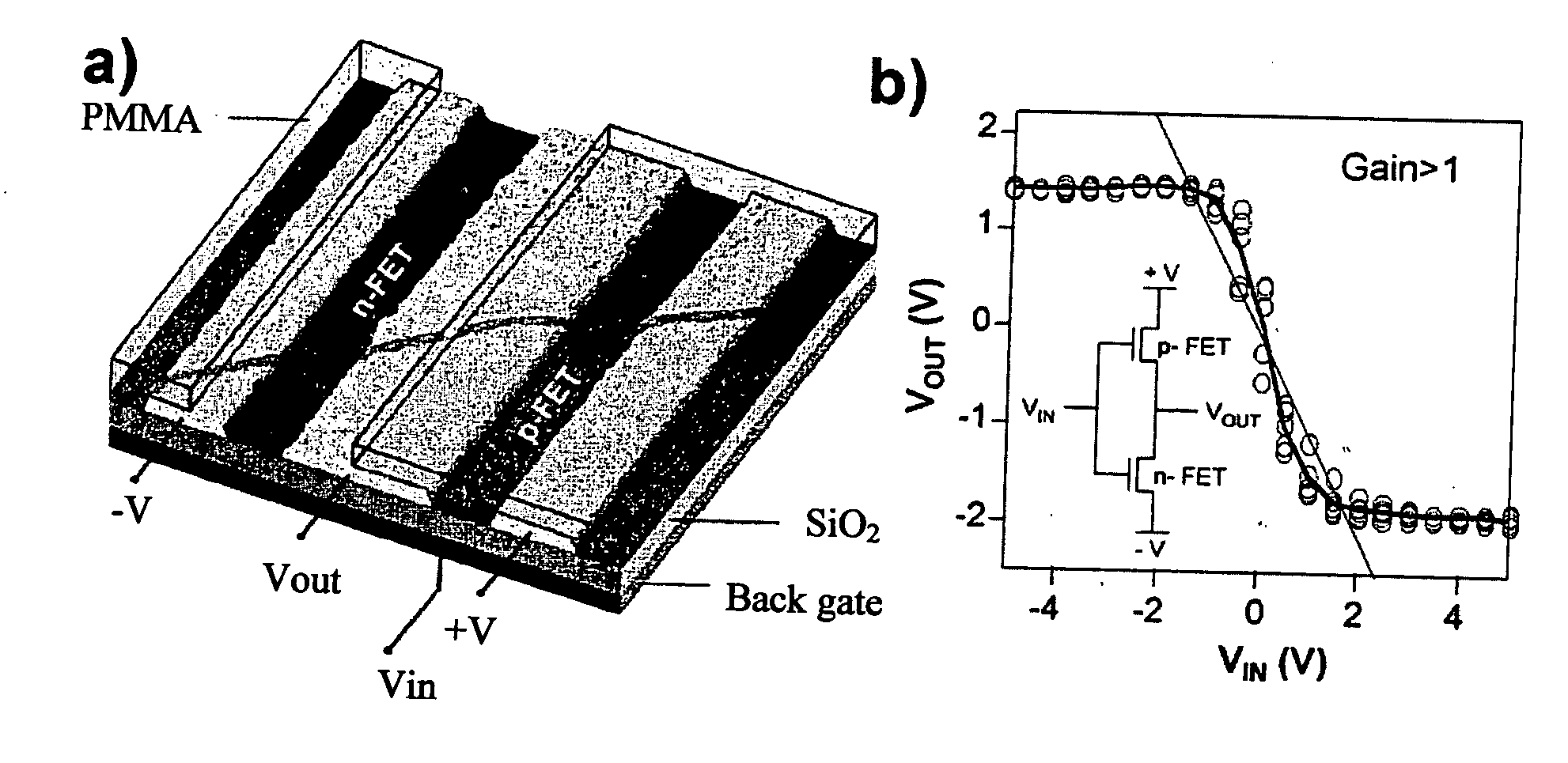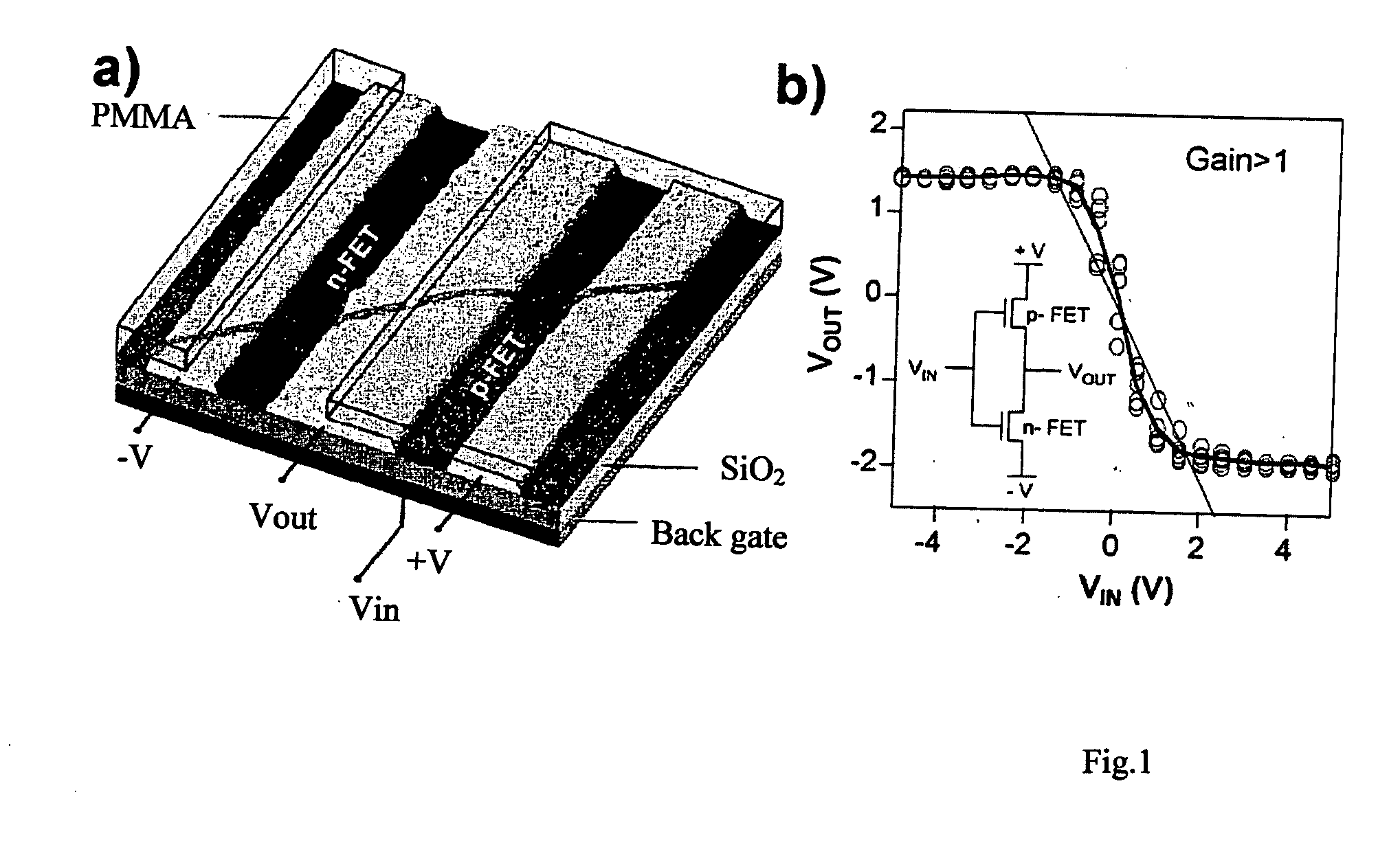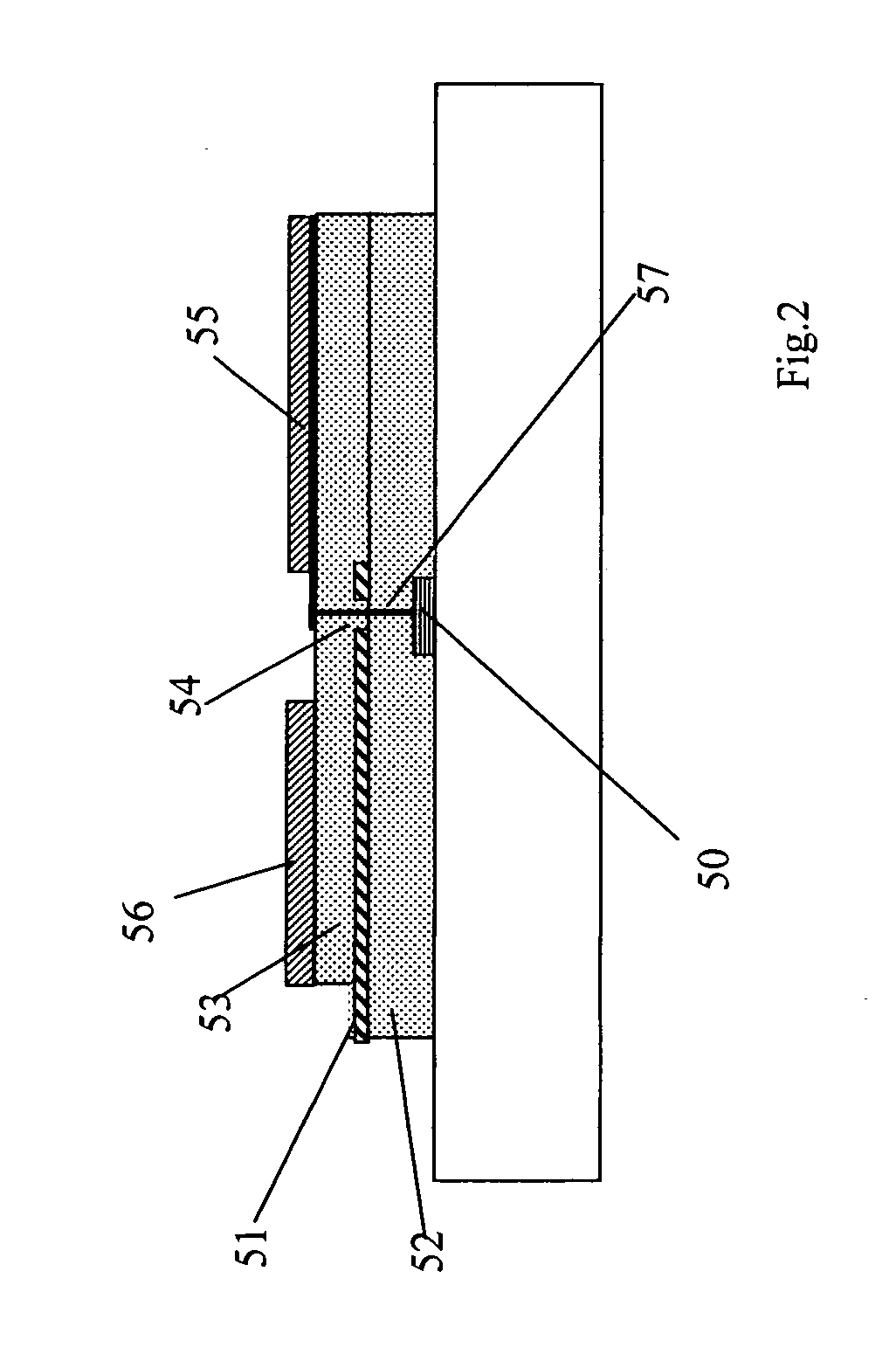Nanotube array electronic and opto-electronic devices
a technology of carbon nanotubes and arrays, applied in the field of carbon nanotube arrays of pand nchannel transistors and pn diodes, can solve the problems of preventing any possibility of ic mass manufacturing, impracticality for any scale of circuit integration, etc., and achieves unique speed of operation, minimize contact resistance, and low contact resistance
- Summary
- Abstract
- Description
- Claims
- Application Information
AI Technical Summary
Benefits of technology
Problems solved by technology
Method used
Image
Examples
Embodiment Construction
[0026]1. Design and Fabrication of CMIN
[0027]In the CMIN design, shown in FIG. 3a, two arrays of the nanotubes 31 and 32 are grown on two separate metal electrodes 33 and 34 normally to the substrate 30, which can be glass plate or Si wafer or any other dielectric substrate capable of sustaining nanotube growth temperatures (˜600° C.). The nanotube arrays have different types of conductivity, which are produced using above discussed methods of the type conversion. Let as assume that nanotubes 31 are p-type and nanotubes 32 are n-type, although reverse type assignment is equally applicable, since the CMIN structure is symmetrical. The metal layer 35 sandwiched between two dielectric layers 36 and 37 represents a common gate for two transistors, wherein the first transistors comprises the substrate metal 33 as a source, the nanotube array 31 as a conducting p-channel and the top metal layer 38 as a drain, while the same top metal layer 38 is a source of the second transistor, the nano...
PUM
 Login to View More
Login to View More Abstract
Description
Claims
Application Information
 Login to View More
Login to View More - R&D
- Intellectual Property
- Life Sciences
- Materials
- Tech Scout
- Unparalleled Data Quality
- Higher Quality Content
- 60% Fewer Hallucinations
Browse by: Latest US Patents, China's latest patents, Technical Efficacy Thesaurus, Application Domain, Technology Topic, Popular Technical Reports.
© 2025 PatSnap. All rights reserved.Legal|Privacy policy|Modern Slavery Act Transparency Statement|Sitemap|About US| Contact US: help@patsnap.com



